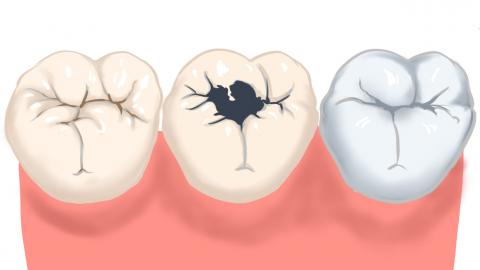Why are my teeth yellow inside but transparent on the outside, and what should I do?
Generally, the condition where teeth appear yellow inside and transparent outside may be related to high enamel translucency, dietary factors, dental fluorosis, tetracycline staining, or dental caries. It is recommended to seek timely medical consultation for treatments such as routine therapy or medication under a doctor's guidance. Detailed explanations are as follows:

1. High Enamel Translucency
Enamel is the hard outer layer of teeth and is highly translucent. When the underlying dentin appears yellow, it can show through the enamel, creating the impression that the inner part of the tooth is yellow while the outer part is transparent. This is a natural characteristic of teeth and does not require special prevention.
2. Dietary Factors
Long-term consumption of pigmented foods or beverages such as coffee, tea, and red wine may lead to pigment deposition on the tooth surface or penetration into the dentin beneath the enamel, affecting the overall tooth color. It is advisable to avoid frequent intake of highly pigmented foods and drinks to reduce staining and penetration.
3. Dental Fluorosis
Dental fluorosis is caused by excessive intake of fluoride. Fluoride leads to poor enamel development, forming yellowish-white spots, making the inner part of the tooth appear more yellow, while the outer part appears translucent due to enamel damage. It is usually accompanied by symptoms such as uneven tooth surfaces and reduced wear resistance. Porcelain veneers may be used under medical guidance, whereby porcelain material matching the tooth color is bonded to the damaged or irregular tooth surface with a special adhesive to cover defects and restore aesthetics.
4. Tetracycline Staining
During tooth development, ingestion of tetracycline antibiotics may lead to tetracycline-stained teeth. Tetracycline binds with calcium in teeth, forming stable gray-yellow or gray-brown compounds, causing the inner part of the tooth to appear yellow and the outer part more translucent. This condition is usually accompanied by tooth discoloration and enamel hypoplasia. Under a doctor's guidance, medications such as ibuprofen sustained-release capsules, metronidazole oral adhesive tablets, and tinidazole lozenges may be used for treatment.
5. Dental Caries
Acids produced by bacteria erode the hard tissues of teeth, causing demineralization and softening that lead to caries. The presence of cavities may make the inner part of the tooth appear more yellow, while the outer transparency may result from enamel erosion. Symptoms such as pain, swelling, and oral odor may also occur. Treatment under medical guidance may include medications such as colchicine tablets, artificial bezoar metronidazole capsules, and azithromycin tablets.
It is recommended to maintain a balanced diet and reduce consumption of pigmented foods and beverages to minimize pigment deposition.








